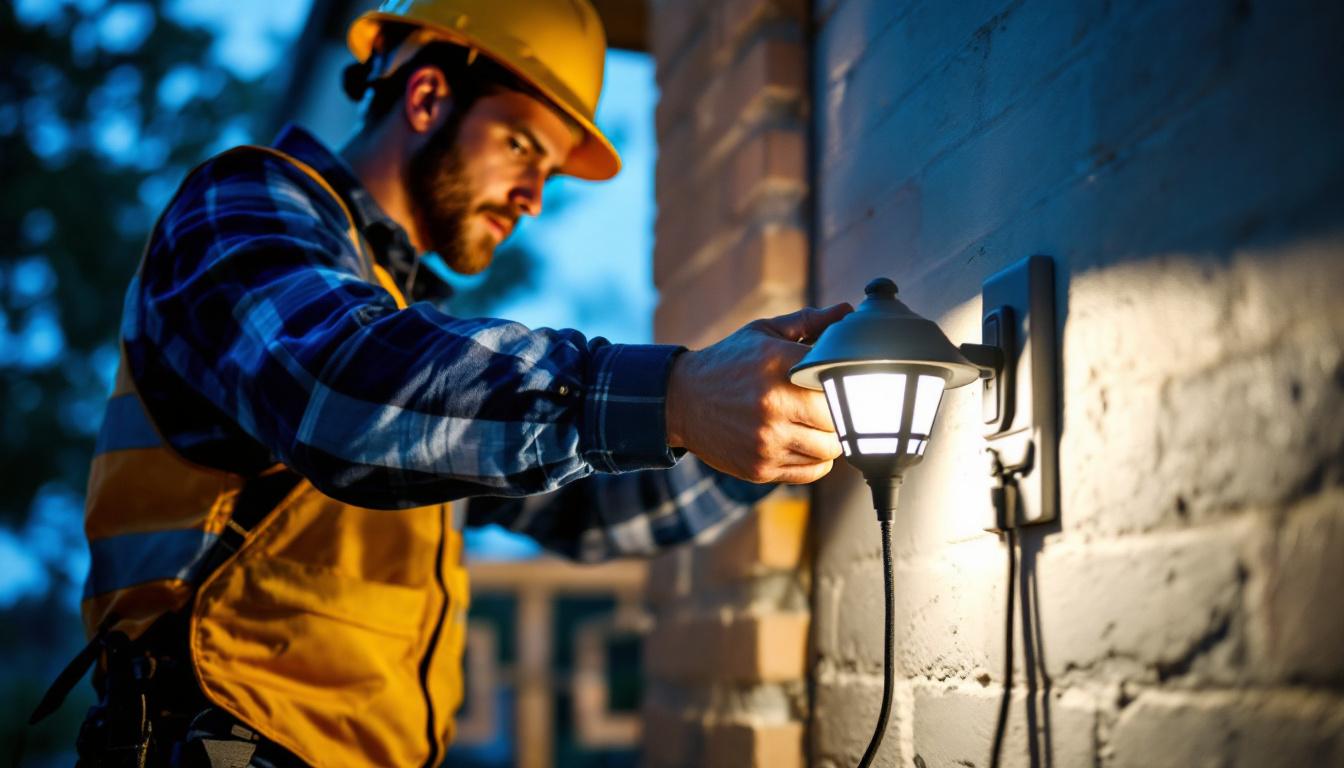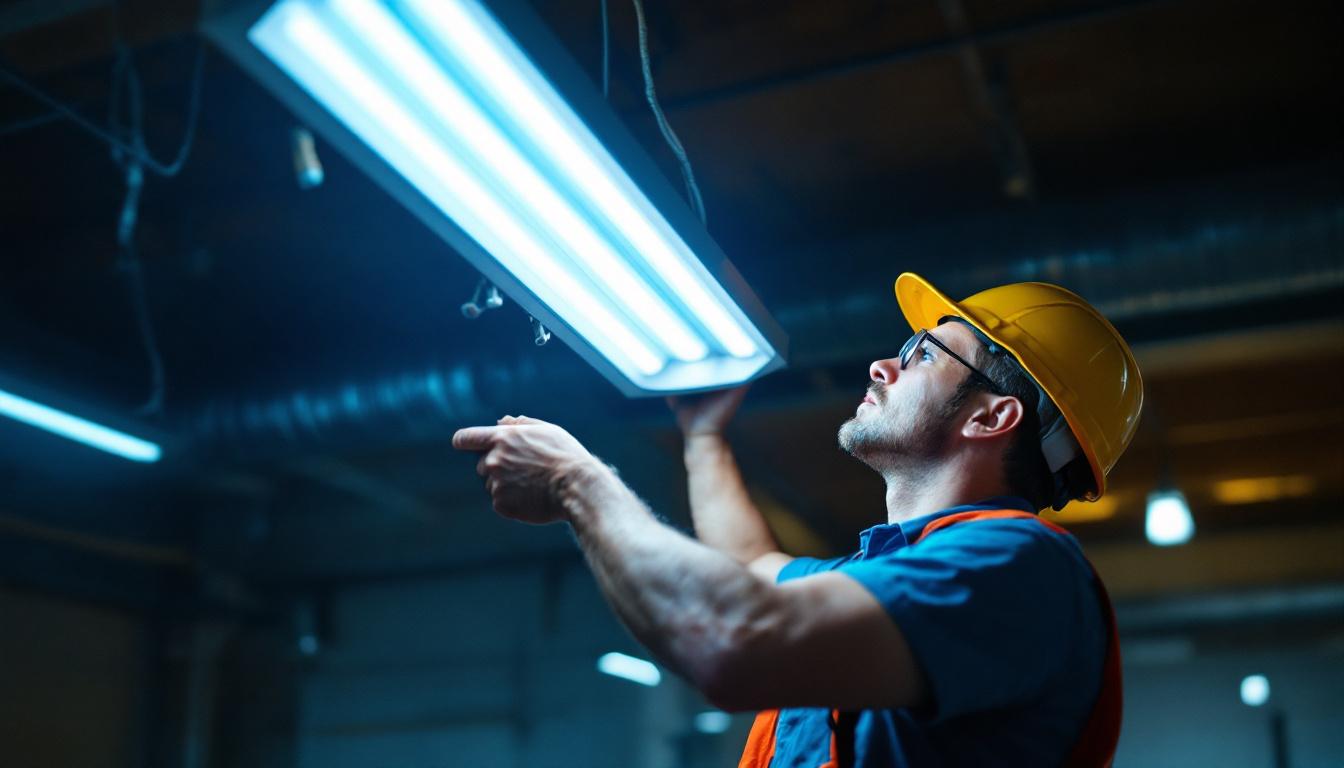
Lighting contractors are increasingly turning to solar-powered solutions as a sustainable and cost-effective option for their projects. Solar-powered lights, especially those equipped with switches, offer flexibility and convenience, but they also come with their own set of challenges. Understanding how to navigate these challenges is essential for ensuring successful installations and satisfied clients. This article delves into the common issues faced by lighting contractors when working with solar-powered lights and provides practical solutions to avoid them.
Solar-powered lighting systems harness energy from the sun to illuminate spaces. These systems typically consist of solar panels, batteries, LED lights, and a control mechanism, which often includes a switch for user convenience. The integration of a switch allows users to control the lighting based on their needs, enhancing the system’s functionality. Furthermore, many modern solar lighting systems come equipped with sensors that can automatically adjust brightness levels based on ambient light conditions, ensuring optimal energy use throughout the day and night.
Each component of a solar-powered lighting system plays a critical role in its overall performance. The solar panels collect sunlight and convert it into electricity, which is then stored in batteries for later use. These batteries are designed to withstand various weather conditions, ensuring reliable performance even during cloudy days or at night. LED lights are favored for their energy efficiency and longevity, while the control mechanism, including the switch, allows users to turn the lights on or off as needed. Some systems also feature smart technology that enables remote control via smartphones, adding an extra layer of convenience for users who may want to manage their lighting from afar.
One of the primary benefits of solar-powered lights is their environmental impact. By utilizing renewable energy, these systems reduce reliance on traditional power sources, leading to lower carbon emissions. Additionally, they can significantly reduce electricity costs for clients, making them an attractive option for both residential and commercial projects. Beyond cost savings, solar-powered lighting systems also contribute to energy independence, allowing users to generate their own power and lessen the strain on local energy grids. Moreover, they can enhance safety and security in outdoor spaces, as well-lit areas deter potential intruders and provide a sense of safety for residents and visitors alike. As communities increasingly seek sustainable solutions, the adoption of solar-powered lighting continues to grow, paving the way for greener urban environments.
While solar-powered lighting systems offer numerous advantages, they are not without challenges. Lighting contractors must be aware of potential issues that can arise during installation and maintenance. Here are some of the most common problems encountered.
One of the most significant issues with solar-powered lights is inadequate sunlight exposure. If the solar panels are not positioned correctly or if they are obstructed by trees, buildings, or other structures, they may not receive enough sunlight to charge the batteries effectively. This can lead to insufficient lighting during the night, frustrating clients and undermining the system’s purpose. To mitigate this issue, it is essential to conduct a thorough site assessment prior to installation. This assessment should include an analysis of the sun’s path throughout the day and seasonal changes, ensuring that the panels are placed in optimal locations that maximize their exposure to sunlight.
The performance and lifespan of the batteries used in solar-powered lights can vary significantly. Factors such as temperature, charging cycles, and battery quality affect how well they hold a charge and how long they last. Contractors must choose high-quality batteries and consider the environmental conditions in which the lights will operate to ensure optimal performance. Additionally, regular maintenance checks are crucial; over time, batteries may degrade, leading to diminished lighting output. Implementing a scheduled maintenance plan can help identify potential issues early, allowing for timely replacements and ensuring that the lighting system remains effective and reliable.
Another common concern with solar-powered lights is their ability to withstand various weather conditions. Extreme temperatures, heavy rain, and strong winds can impact the longevity and functionality of the lights. It’s important for contractors to select models that are specifically designed for durability and weather resistance. This includes ensuring that the fixtures are rated for outdoor use and can handle moisture and temperature fluctuations. Furthermore, using corrosion-resistant materials can extend the life of the lighting system, reducing the need for frequent replacements and repairs.
Light output and distribution can also pose challenges for solar-powered lighting systems. Some models may not provide sufficient brightness or may cast uneven light patterns, leading to poorly lit areas. To address this, contractors should consider the lumen output of the fixtures and the design of the light distribution. Utilizing fixtures with adjustable settings or multiple LED configurations can enhance light coverage and ensure that the intended areas are adequately illuminated. Additionally, educating clients on the expected performance of the lights can help manage their expectations and lead to greater satisfaction with the installation.
To avoid common issues associated with solar-powered lights, contractors should adhere to best practices during installation. Proper planning and execution can make a significant difference in the performance and longevity of the lighting system.
Before installation, a thorough site assessment is crucial. This involves evaluating the location for sunlight exposure, potential obstructions, and the overall layout of the area. Identifying the best spots for solar panel placement will ensure maximum efficiency and performance.
Solar panels should be oriented and angled correctly to capture the most sunlight throughout the day. This often means adjusting the panels to face true south in the northern hemisphere or true north in the southern hemisphere. The angle of the panels should also be adjusted based on the geographical location to optimize solar energy absorption.
Regular maintenance is essential for the longevity and efficiency of solar-powered lighting systems. Lighting contractors should inform clients about the necessary upkeep to ensure optimal performance over time.
Dust, dirt, and debris can accumulate on solar panels, reducing their efficiency. Regular cleaning is necessary to maintain optimal performance. Depending on the location, contractors may recommend cleaning the panels every few months or more frequently if they are situated in particularly dusty or polluted areas.
Battery maintenance is another critical aspect of solar-powered light upkeep. Contractors should educate clients on how to monitor battery performance and recognize signs of deterioration. Replacing batteries at the end of their lifespan is essential to avoid system failures and ensure consistent lighting.
When selecting solar-powered lights for a project, contractors must consider various factors to ensure they choose the best options for their clients’ needs.
The light output and color temperature of solar-powered lights can significantly impact the ambiance of a space. Contractors should assess the intended use of the lighting and select fixtures that provide adequate brightness and the desired color temperature. For example, warmer tones may be more suitable for residential settings, while cooler tones might be preferred for commercial applications.
Given that solar-powered lights are often installed outdoors, durability and weather resistance are paramount. Contractors should look for products made from high-quality materials that can withstand various weather conditions, including rain, snow, and extreme temperatures. This ensures that the lights will function reliably over time.
Effective communication with clients is essential for successful solar-powered lighting installations. Educating clients about the system’s functionality, maintenance requirements, and benefits can lead to higher satisfaction and fewer misunderstandings.
Lighting contractors should take the time to explain how solar-powered lights work, including the role of the solar panels, batteries, and switches. Providing a clear understanding of the system can help clients appreciate the technology and its benefits, leading to more informed decisions.
It is crucial to set realistic expectations regarding the performance of solar-powered lights. Clients should be informed about factors such as charging times, potential limitations in low-light conditions, and the importance of proper maintenance. This transparency can prevent dissatisfaction and foster trust between contractors and clients.
There are several misconceptions surrounding solar-powered lighting that contractors should address to ensure clients have accurate information.
Many clients may believe that solar-powered lights are prohibitively expensive. While the initial investment can be higher than traditional lighting, the long-term savings on electricity bills and maintenance costs often offset this expense. Educating clients on the financial benefits can help them see the value in solar solutions.
Another common misconception is that solar-powered lights do not provide adequate brightness. Advances in LED technology have significantly improved the light output of solar lights, making them suitable for various applications. Contractors should showcase the capabilities of modern solar-powered lights to dispel this myth.
The solar lighting industry is continually evolving, with new technologies and trends emerging to enhance performance and usability. Staying informed about these developments can help lighting contractors remain competitive and offer the best solutions to their clients.
Smart technology is making its way into solar-powered lighting systems, allowing for greater control and customization. Features such as motion sensors, remote access, and integration with smart home systems are becoming increasingly popular. Contractors should explore these options to provide clients with cutting-edge solutions that enhance convenience and efficiency.
Advancements in battery technologies are also on the horizon, promising longer lifespans and improved performance. Lithium-ion batteries, for example, are becoming more common in solar lighting applications due to their efficiency and durability. Contractors should keep an eye on these developments to offer the best products available.
Solar-powered lights with switches present a fantastic opportunity for lighting contractors to provide sustainable and cost-effective solutions for their clients. By understanding the common issues associated with these systems and implementing best practices for installation and maintenance, contractors can ensure successful projects and satisfied customers. Educating clients about the benefits and functionality of solar lighting, addressing misconceptions, and staying informed about industry trends will further enhance the contractor’s ability to deliver high-quality solar-powered lighting solutions.
Ready to elevate your lighting installations with the most efficient, cost-effective solar-powered solutions? Look no further than LumenWholesale, where we provide contractors with spec-grade lighting products at unbeatable wholesale prices. Our extensive selection is designed to meet the highest industry standards, ensuring you deliver reliable, high-performance lighting for every project. Plus, with free shipping on bulk orders, you can enjoy premium lighting at the best value — without hidden fees or compromises. Don’t miss out on the perfect blend of quality, affordability, and convenience. Visit LumenWholesale today and experience Wholesale Lighting at the Best Value for your next project.

Discover why LED light beams are revolutionizing the lighting industry and becoming essential tools for contractors.

Discover how upgrading your washing machine wall outlet can be the unexpected secret to securing more lighting contracts.

Discover the ins and outs of movement-activated lighting with our comprehensive guide.

Discover essential insights and expert tips for lighting contractors working with four bulb fluorescent light fixtures.